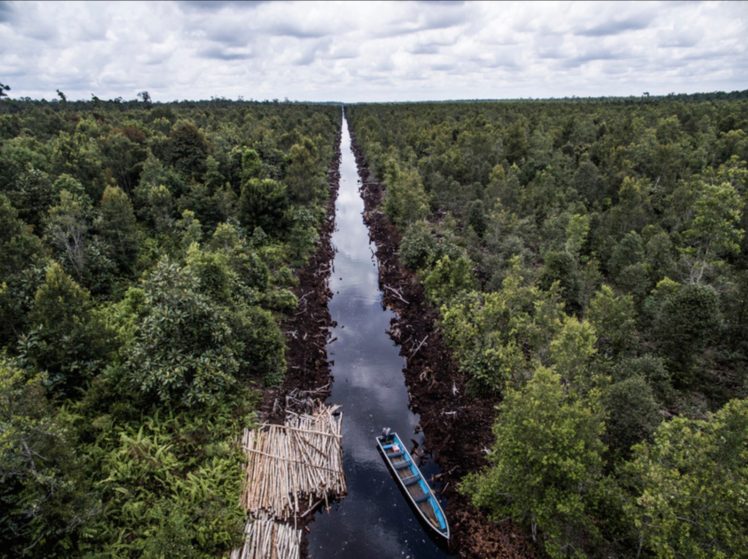
Originally posted at the UN-REDD Programme
Indonesia’s president Joko Widodo announced the other week a landmark moratorium banning all peat-damaging activities. At the Climate COP in Marrakech a new UN Environment-led global initiative, the Global Peatlands Initiative, was launched.
Why that sudden focus on protecting peatlands, an ecosystem so far not on the radar of the public and most policy makers?
Not widely known, peat is the world’s largest terrestrial organic soil carbon stock. Peatlands are found on every continent and in most countries. Peat consists of partially decayed plant material, which has accumulated under water-logged conditions over long periods of time. While peat lets us think of a tumbler of whisky by a roaring fire and orangutans swinging through trees in Borneo it also evokes images of endless palm oil plantations and toxic haze. Although peatlands cover less than 3 per cent of the global land surface, peat soils contain carbon stocks equivalent to at least 60 per cent of all atmospheric carbon. In fact, the carbon in peatlands is substantially more than the carbon stock in the entire forest biomass of the world and contains almost 100 times more carbon than tropical forests.
However, despite their importance, peatlands are under increased threat, mainly from conversion for palm oil and pulp wood production. Because of their extraordinary size as carbon stock, peatlands hold the potential of sending climate change spiraling out of control. Rising emissions due to increasing peat degradation and loss from agriculture and fires can drive the world closer to a dangerous tipping point – a chain reaction in which thawing permafrost switches boreal and Arctic peatlands, which make up 87% of the world’s peatlands, from carbon sinks to sources, emitting huge amounts of greenhouse gas.
Already now greenhouse gas emissions from drained and burning peatlands account for up to 5 per cent of anthropogenic carbon emissions. Among the top 25 ‘peat-emitting’ countries, emissions from peatland degradation are over 50 per cent of the emissions from fossil fuels and cement production combined. And the impacts of peatland degradation go beyond emissions, recent studies have suggested that the 2015 Indonesian peat fires emitted nearly 16 million metric tons of carbon dioxide a day, as much as the entire daily emission of the United States, an economy 20 times larger than that of Indonesia. This has dramatic effects for global health and economy: affected 43 million people, indirectly killed up to 100,000 people through the toxic haze, and led to US$ 16 billion in overall economic damage (twice the value of the Aceh Tsunami Reconstruction).
Indonesia’s moratorium, an exceptional example of climate leadership, will help prevent disastrous wildfires and billions of tons of carbon dioxide emissions over the next few decades, with huge health benefits for the population.
Together with the governments of Peru and the Republic of Congo, Indonesia is also a founding member of the Global Peatlands Initiative. This unprecedented mobilization of leading experts and institutions includes in addition: UN Environment, FAO, IFAD, European Commission’s Joint Research Center, CIFOR, Wetlands International, UNEP-WCMC, GRID-Arendal, Ramsar Convention Secretariat, European Space Agency, WRI, Greifswald Mire Centre and SarVision/Sateligence.
Committed to working together to change the peat management paradigm the Global Peatlands Intitiave will focus on building a better understanding of peat status and trends and on ensuring the maintenance and restoration of peat carbon stocks.



